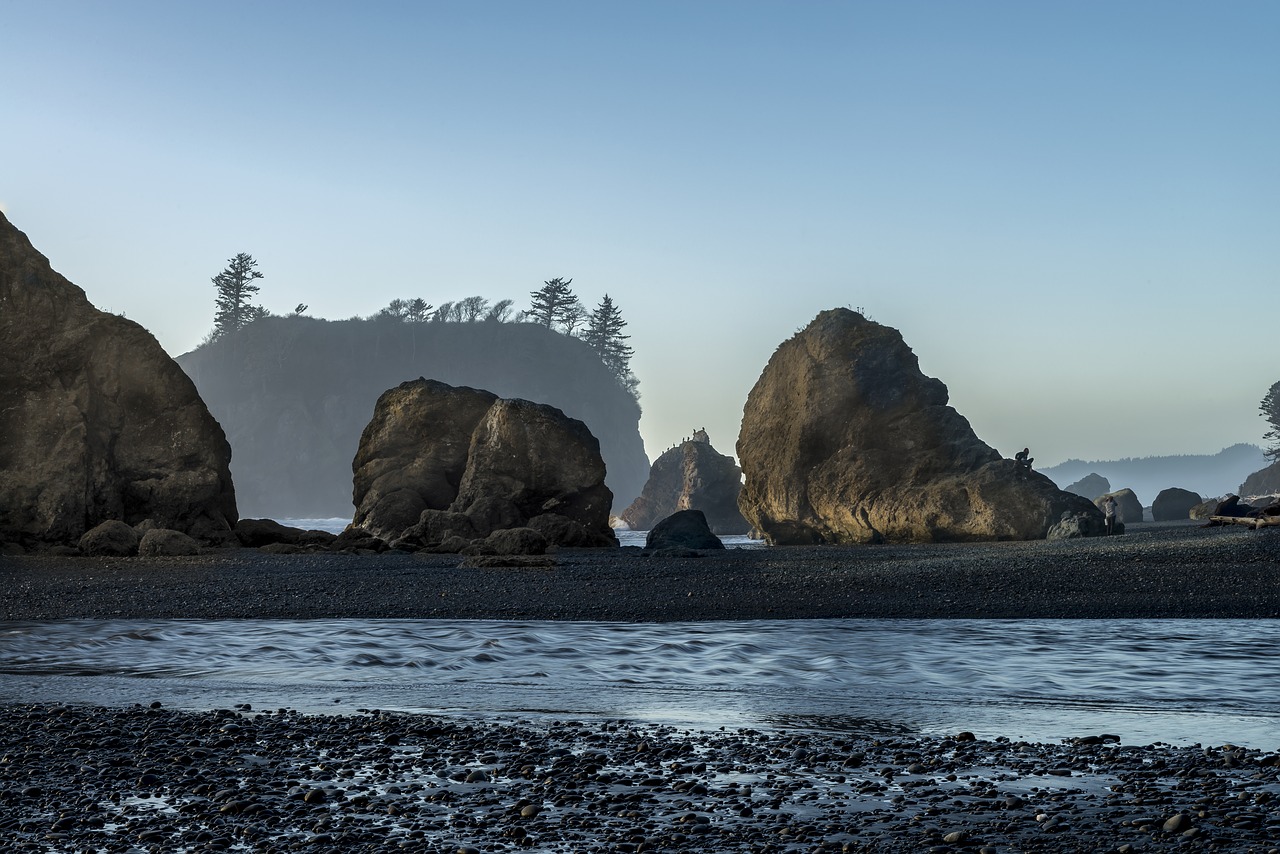Olympic National Park – three ecosystems in one

Olympic National Park is located on Olympic Peninsula in the state of Washington. The park invites tourists to explore three different ecosystems: sub-alpine forest and wildflower meadow, temperate forest, and the rugged Pacific Shore. The outstanding scenery of these ecosystems is breathtaking and leaves everyone speechless. The park offers countless activities for people with different preferences.

The coastal part of Olympic National Park is 60 miles long beach with some sandy parts and other full of stones and boulders. Native communities inhabited this area close to two rivers; the Hoh River has the Hoh people and close to Quileute River live the Quileute. This coastal strip is more accessible than the other parts of the park.
The most popular beauty spot on this coast is the Ozette Lake which has three islands, Tivoli, Garden Island, and Baby Island.
There is a very famous 9-mile trail called the Ozette loop that offers spectacular views. Moving towards the south of the park Hoh River discharges old trees and timber as well as other natural debris, giving the beach a natural look. This park is known for its turbidites. Turbidities are geological sediments distributed at the bottom of the ocean floor.

The Olympic Mountains rise in the center of the park, covered with enormous glaciers. The largest among them is Hoh Glacier at 3,06 miles in length. The glaciers carved the mountains into their current profile.
The highest peak is Mount Olympus which its 7,965 feet. Mount Olympus has the biggest glacial cover of any non-volcanic peak.
Temperate rainforest is spread all over the western part of the park including the Hoh Rainforest and Quinault Rainforest receiving large amounts of rain that make it the wettest area in the continental United States.
Unlike the tropical rainforest, temperate rainforests are dominated by coniferous trees, including Western red cedar and Coast Douglas-fir.
The eastern side of the park is famous for its valleys with smaller trees and not that dense undergrowth. Annual rains in the valleys are ten times less than in the temperate rainforest.

Ice age isolation led to the evolution of some animal and plant species specific only to the northern Pacific coast. Animals that inhabit this region are chipmunks, squirrels, skunks, six species of bats, weasels, coyotes, muskrats, fishers, river otters, beavers, red foxes, mountain goats, martens, bobcats, black bears, Canadian lynxes, moles, snowshoe hares, shrews, and cougars.

To visit this amazing national treasure and experience all its beauty more than a weekend is needed. The park offers a network of hiking trails that will lead you to the deepest inner parts of it.
Also, you can camp on the incredible coastline and have the adventure of a lifetime. If camping, be careful because of the high tides that can sweep away the shore.
Hurricane Ridge point is a ski center during the winter months but in summer is a perfect picnic area with a stunning view of the Olympic National Park.
If you have any comments then please drop us a message on our Outdoor Revival Facebook page
If you have a good story to tell or blog let us know about it on our FB page, we’re also happy for article or review submissions, we’d love to hear from you.
We live in a beautiful world, get out there and enjoy it.
Outdoor Revival – Reconnecting us all with the Outdoors
